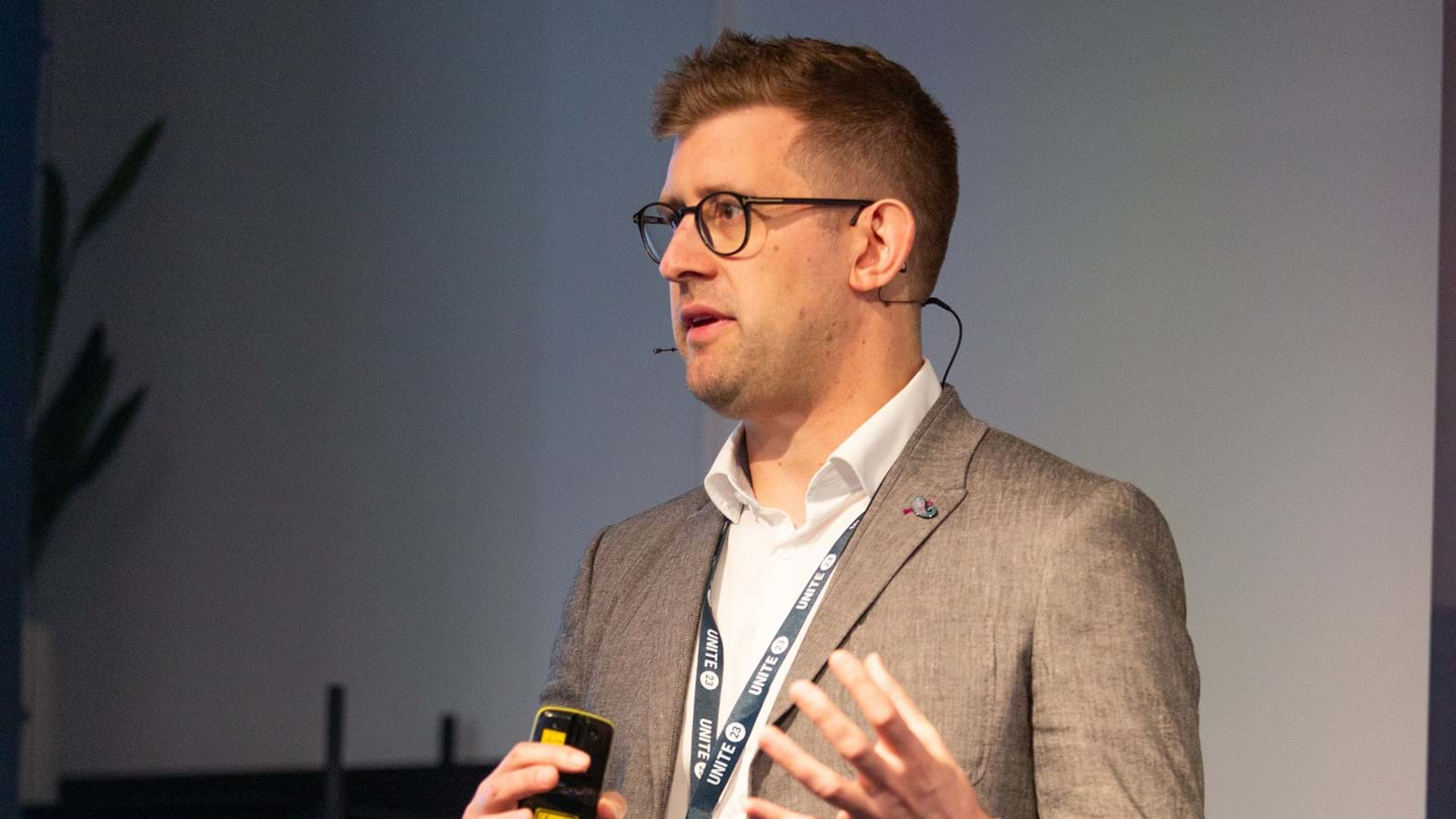An insider’s look into Unily’s engineering team
It’s always important to stay ahead of the curve and that’s what our engineering team enables Unily to do. This growing department works to the industry standard in building, maintaining, and optimizing the product, ensuring the platform is at the top of its game for every individual client. Working behind the scenes, we wanted to shine the spotlight on our engineering team and share an insider’s look into the people that keep Unily’s product at the forefront of innovation.

The team that keeps on growing
The engineering team acts as a main pillar of the company, working together to create the features that continually improve the product. It is complex and creative work that requires adaptability as technical challenges arise and business requirements evolve.
Unily’s engineering department started as a small, UK-based team, and has now grown to over 70 people worldwide. Working alongside product marketing, the engineering team turns the roadmap into reality – designing, developing and testing new employee experience platform features to ensure they are fit for release. Once built, engineering works closely with operations and support to deploy and maintain the intranet platform.
At present, Unily has eleven global developer teams, with dedicated specialists in disciplines such as quality assurance and user interface design, among others. The team works to an agile methodology and leverages a variety of tools, languages and frameworks. The technology stack is primarily powered by Microsoft, from the Azure hosting platform to the Visual Studio development tools, but most important is using the right tool for the job.
"The development stage is crucial when it comes to product enhancement. It’s our job to turn the product vision into a reality, while ensuring we stay ahead of the curve in terms of technical innovation."
The specializations within the team
Alongside full-stack developers, Unily’s engineering team contains specialist skillsets in order to ensure a high level of quality is maintained throughout the process.
User Interface Development
This team focuses on making the user interface (UI) of the platform beautiful and intuitive. As the goal of the UI is for clients to find it simple and efficient, it’s important to make sure the front end is user-friendly and consistent with our award-winning design standards. The UI development team also focuses on accessibility, ensuring the product meets the international WCAG 2.1 AA compliance guidelines across the board.
Quality Assurance
Quality assurance’s goal is to ensure the same confidence in quality is achieved across every feature that is developed, meaning Unily can guarantee to be best in class for its product.
Architects
Architects work with the product marketing team to get any high-level requirement shaped in the right way using their specialized skillset. They have a breadth and depth of knowledge and are able to talk through the ideas and the technology, breaking it down into applications and services and giving it the right steer.
A day in the life: our engineering team’s daily priorities
Although no two days are the same for our teams that work in engineering, they do share the same underlying objectives. Here’s an overarching look into the core aspects of a day in the life of Unily’s engineering team:
- Incident management or priority cases that need to be actively solved to keep client platforms running smoothly
- Refinement sessions to discuss and work on upcoming stories
- Proof of concepts for upcoming features
- Resolving technical blockers and implementing quality of life improvements
- Code reviews, documentation, and testing for new features
- Working closely with architects and other business departments including product marketing and operations, to ensure all features are of a high quality and will help to drive innovation for the product
- Custom development to build features to clients’ spec on top of the product’s developer framework
The team in action – building a Unily feature
From the initial idea, whether it’s through customer ideation or an insight from the product marketing team, through to the implementation of the feature into your intranet, the engineering team takes the lead role in creating any new updates or product optimizations.
This is the step-by-step process of how the team builds a new feature:
- Roadmap: The product marketing team populate the roadmap with ideas and suggestions for new features or enhancements. The engineering team then provide guidance on effort and feasibility to help identify priorities.
- Design: In the design stage, the product managers and technical architects set the direction of the feature, making high-level technology choices and creating initial wireframes.
- Development: This phase is where the engineers deliver on the requirements, and the feature goes through assessments such as quality assurance and testing. Development is an iterative process, allowing the team to regularly pivot towards the best result. Unit tests and continuous integration help ensure high quality and good design.
- Release: In the release phase, final checks are given to the feature such as automated and manual regression tests and a performance review. This is to ensure that the feature is up to standard ahead of deployment.
- Deploy: Once deployed, the feature is added to Unily’s Azure-hosted cloud platform.
Choose a solution that puts its focus on innovation
At Unily, we know how important continual product innovation is to keep ahead of the curve. If you are interested to see how our platform and feature developments could help your enterprise, get in touch with us today.
Get started. Get your free demo.
Reinvent your intranet for the employee experience era.
-
Event
















